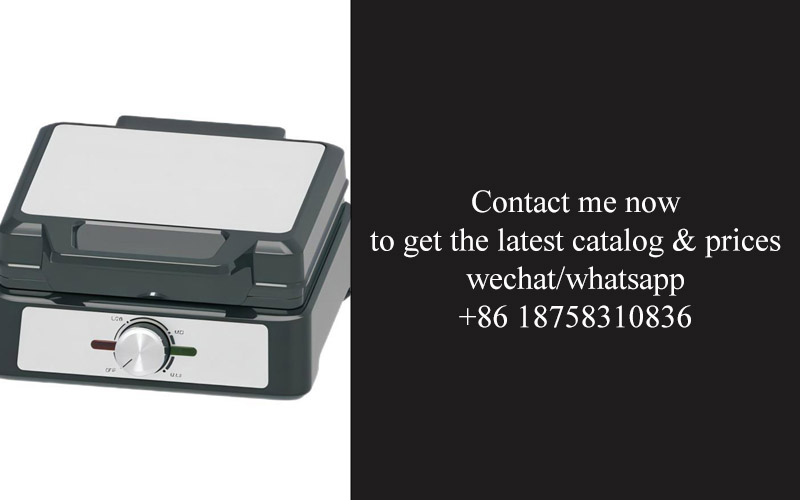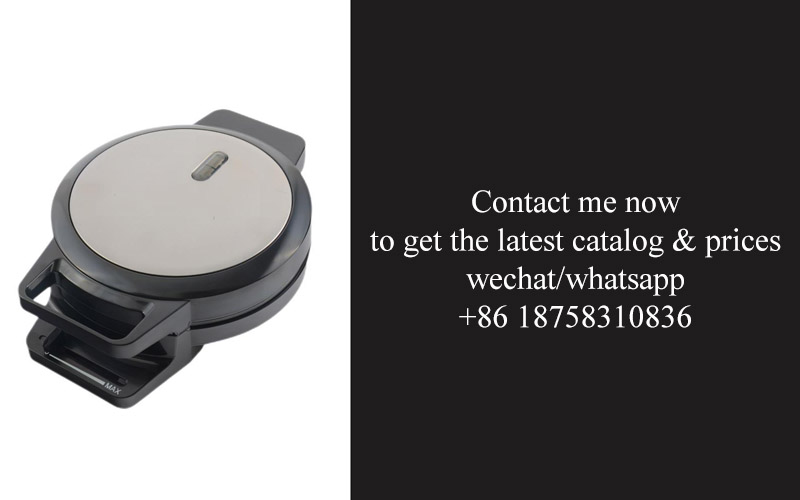Address
304 North Cardinal
St. Dorchester Center, MA 02124
Work Hours
Monday to Friday: 7AM - 7PM
Weekend: 10AM - 5PM
Address
304 North Cardinal
St. Dorchester Center, MA 02124
Work Hours
Monday to Friday: 7AM - 7PM
Weekend: 10AM - 5PM

In recent years, the kitchen appliances industry has witnessed a surge in innovation, with ceramic coated non-stick plates emerging as a standout product. These plates are not just changing the way we cook; they’re redefining the expectations of what cookware should be. From health-conscious consumers to eco-friendly shoppers, the appeal of ceramic coated non-stick plates is undeniable. Let’s dive into the factors that have made them the talk of the town and why they’re poised to shape the future of cooking.
The kitchen, once a realm of constant scrubbing and frustration, has undergone a remarkable transformation with the rise of ceramic coated non-stick plates. This innovative kitchenware has quietly surged to the forefront of the market, redefining what it means to cook efficiently and enjoyably. Let’s delve into how this game-changer has become a staple in modern kitchens.
Ceramic coated non-stick plates have emerged as a beacon of innovation in the kitchenware industry. They boast a sleek, modern design that seamlessly blends with any kitchen aesthetic, from the most minimalist to the most rustic. Their popularity isn’t just skin-deep; it’s rooted in the practicality they bring to cooking. No longer are chefs and home cooks forced to endure the eternal battle against stubborn food sticking to their pans.
The non-stick coating on these plates is a marvel of modern technology. It’s a thin, durable layer of ceramic that replaces the traditional PTFE (Teflon) coating. This ceramic alternative offers several advantages that have made it a favorite among consumers. Firstly, it’s free from harmful chemicals, making it a healthier choice for those conscious of what they’re using in their cooking. Secondly, it maintains its non-stick properties even after hundreds of washes, ensuring that your cooking experience remains consistently smooth.
But it’s not just the non-stick feature that’s turning heads. Ceramic coated non-stick plates also boast excellent heat distribution. The ceramic coating conducts heat evenly across the surface, reducing the risk of hotspots that can burn food and leave unsightly marks. This even heat distribution is a game-changer for browning and searing, allowing for professional-quality results in the comfort of your own home.
One of the most compelling reasons for the rise of ceramic coated non-stick plates is their versatility. They can be used on a variety of cooktops, including induction, gas, electric, and even outdoor grills. This versatility is a breath of fresh air for those who are tired of the limitations imposed by their cookware. Whether you’re a grill master or a slow-cooker aficionado, ceramic coated plates have you covered.
The manufacturing process behind these innovative plates is a blend of art and science. The ceramic coating is applied through a proprietary process that involves several layers of ceramic particles and resins. This meticulous application ensures that the coating is durable, non-reactive, and scratch-resistant. The result is a cookware that not only looks beautiful but also withstands the test of time.
As the demand for ceramic coated non-stick plates has grown, so too has the market for them. More and more brands are jumping on the bandwagon, offering a variety of designs, colors, and functionalities. From sleek, minimalist sets to those with ergonomic handles and innovative features, there’s something for everyone. This influx of options has only served to heighten consumer interest, as they explore the possibilities that these plates offer.
Moreover, the environmental factor cannot be overlooked. Traditional non-stick cookware has been under scrutiny for its environmental impact, particularly due to the release of PFOA and PFOS when overheated. Ceramic coated plates, on the other hand, are environmentally friendly and sustainable, appealing to eco-conscious consumers who are looking to reduce their carbon footprint in the kitchen.
In recent years, health trends have also played a significant role in the popularity of ceramic coated non-stick plates. With an increasing awareness of the potential health risks associated with certain cooking surfaces, consumers are seeking out alternatives that are safer for their families. The ceramic coating’s non-reactive nature and absence of harmful chemicals align perfectly with these health-conscious preferences.
The rise of ceramic coated non-stick plates is a testament to the kitchenware industry’s ability to evolve with the times. It’s a product that has managed to capture the hearts and minds of consumers worldwide, offering a combination of health, convenience, and sustainability that is hard to resist. From professional chefs to busy home cooks, ceramic coated plates have become an indispensable part of the modern kitchen. And as technology continues to advance, we can only imagine what the future will bring for this burgeoning trend in kitchenware.

Ceramic coated non-stick plates have become the talk of the town in the kitchen appliances industry, and for good reason. The surge in popularity can be attributed to several key factors that have redefined the way we cook and maintain our cookware.
The sleek, modern aesthetic of ceramic-coated cookware is hard to ignore. Unlike traditional non-stick surfaces, ceramic coatings offer a smooth, porcelain-like finish that is not only visually appealing but also durable. This clean and sophisticated look has made ceramic-coated plates a favorite among those who appreciate the fusion of form and function in their kitchenware.
Durability is another major draw. Ceramic coatings are known for their longevity, often outlasting the non-stick coatings found on many Teflon pans. This means fewer replacements and a more sustainable approach to cooking. The robust nature of ceramic coatings allows them to withstand higher temperatures and scratching, making them a practical choice for busy kitchens.
Health-conscious consumers are also embracing ceramic-coated non-stick plates. Unlike some traditional non-stick coatings that contain potentially harmful chemicals like PFOA (perfluorooctanoic acid), ceramic coatings are free from these harmful substances. This eco-friendly aspect of ceramic cookware has become increasingly important as people seek out healthier alternatives for their cooking needs.
The non-stick properties of ceramic coatings are superior to those of traditional non-stick surfaces. The ceramic layer provides a superhydrophobic surface that easily releases food, making cooking less of a hassle and cleanup a breeze. This feature is particularly beneficial for those who prefer a quick and easy cooking experience without the need for excessive oil or butter.
The versatility of ceramic-coated non-stick plates is undeniable. They can be used on a variety of cooktops, including induction, gas, electric, and even outdoor grills. This broad compatibility ensures that ceramic cookware can be a staple in any kitchen, regardless of the existing appliances.
Innovation in the manufacturing process has also played a significant role in the rise of ceramic-coated non-stick plates. Modern factories have developed advanced techniques to apply the ceramic coating in a way that ensures even distribution and long-lasting performance. This has allowed for the creation of cookware that is not only visually stunning but also highly functional.
The market for ceramic-coated non-stick plates has seen a surge in demand, driven by both new and existing kitchen appliance consumers. Retailers have noticed this trend and are now offering a wide range of ceramic-coated products, catering to different budgets and preferences. The variety available has made ceramic cookware accessible to a broader audience.
The environmental impact of kitchenware is a growing concern, and ceramic-coated plates address this issue head-on. They are typically made from natural, sustainable materials, and their long lifespan reduces the need for frequent replacements, thus minimizing waste. This eco-conscious approach resonates with consumers who are looking to reduce their carbon footprint in the kitchen.
Lastly, the culinary world is constantly evolving, and chefs and home cooks alike are always seeking the next big thing. Ceramic-coated non-stick plates have become that sought-after innovation, offering a new level of performance and ease that has reinvigorated the kitchen appliances industry. The buzz around ceramic coatings is not just a fleeting trend; it’s a testament to the industry’s ability to adapt and meet the needs of modern consumers.

In the heart of the kitchen appliances industry, there’s a factory that’s not just churning out products but revolutionizing the way we cook. This factory specializes in the manufacturing of ceramic coated non-stick plates, and it’s where the magic happens.
The factory is a marvel of modern engineering, with each section meticulously designed to ensure the highest quality of ceramic coated non-stick plates. The production line is a blend of state-of-the-art machinery and skilled labor, working in harmony to bring innovation to the kitchen.
From the raw materials to the finished product, the process is a testament to precision and care. The factory starts with selecting high-grade materials, ensuring that the base of the plates is durable and can withstand the rigors of everyday cooking. The ceramic coating is then applied, a process that involves multiple layers to achieve the non-stick properties that make these plates so popular.
Workers in the factory are trained to apply the ceramic coating with precision. The coating is not just a protective layer; it’s the key feature that sets these plates apart. It’s a delicate balance of science and art, as the coating must be applied evenly to prevent any potential hot spots or sticking.
The coating process itself is fascinating. Workers use specialized equipment to spray the ceramic particles onto the plate, creating a uniform layer. This layer is then baked at high temperatures, fusing the ceramic particles to the metal and creating a non-reactive surface that’s safe for use with all types of utensils.
As the plates move along the production line, they are inspected at various stages. Quality control is paramount, and any plate that doesn’t meet the stringent standards is immediately set aside. This attention to detail is what ensures that only the best ceramic coated non-stick plates leave the factory.
The manufacturing process also includes rigorous testing. Each plate is tested for non-stick properties, heat resistance, and durability. These tests are not just about meeting industry standards; they’re about exceeding expectations. The factory takes pride in producing a product that not only performs well but also stands the test of time.
Innovation is at the core of this factory’s philosophy. They are constantly exploring new techniques and materials to improve the ceramic coating process. This means investing in research and development, and working closely with scientists and engineers to push the boundaries of what’s possible.
The factory’s commitment to sustainability is also noteworthy. They use eco-friendly materials and minimize waste throughout the production process. This approach not only reduces their environmental impact but also appeals to consumers who are increasingly conscious of the products they purchase.
The factory’s team is a diverse group of individuals, each bringing their unique skills and perspectives to the table. They work together in a collaborative environment that fosters creativity and innovation. It’s this collective effort that allows the factory to remain at the forefront of the ceramic coated non-stick plate industry.
As the plates are packaged, prepared for shipping, and eventually make their way to consumers’ kitchens, there’s a sense of pride and satisfaction. The factory understands that their products are more than just cookware; they are tools that make cooking more enjoyable and efficient.
In the world of kitchen appliances, this factory stands out as a beacon of innovation. It’s a place where the future of ceramic coated non-stick plates is being shaped, one plate at a time. And it’s this dedication to excellence that has made them a leader in the industry.

Ceramic coated cookware has been making waves in the kitchen appliances industry, and it’s no surprise why consumers are flocking to it. The benefits of this innovative cookware are numerous, offering a healthier, more durable, and eco-friendly alternative to traditional non-stick surfaces. Let’s delve into the advantages that have captured the hearts and minds of many home cooks.
Endurance and DurabilityCeramic coatings are renowned for their exceptional durability, which is a stark contrast to the more delicate Teflon coatings found on traditional non-stick pans. These ceramic coatings can withstand high temperatures without peeling, flaking, or losing their non-stick properties, making them a long-lasting investment for any kitchen. The robustness of ceramic coated cookware means fewer replacements and a more sustainable approach to cooking.
Healthier Cooking ExperienceOne of the primary reasons consumers are drawn to ceramic coated cookware is the health benefits it offers. Unlike Teflon, ceramic coatings do not contain harmful chemicals like PFOA or PTFE, which can potentially leach into food at high temperatures. This means that ceramic cookware is a safer choice for those looking to minimize their exposure to potentially harmful substances while cooking.
Non-Stick Performance Without the HassleThe non-stick properties of ceramic coated cookware are second to none. The smooth, ceramic surface allows for effortless food release, reducing the need for excessive oil or butter. This not only makes cooking easier but also healthier, as it cuts down on the amount of fat and calories in your meals. The ease of cleaning is another draw, as food particles tend to slide off the surface, leaving the cookware spotless with minimal scrubbing.
Eco-Friendly and SustainableCeramic coated cookware is a more sustainable choice for environmentally conscious consumers. The manufacturing process for ceramic coatings is less energy-intensive than that of Teflon, and the materials used are more readily recyclable. Additionally, the longevity of ceramic cookware means that fewer pans end up in landfills, contributing to a lower carbon footprint.
Versatile for Various Cooking TechniquesCeramic coated cookware is incredibly versatile, suitable for a wide range of cooking methods, from sautéing and stir-frying to baking and roasting. The even heat distribution across the cookware’s surface ensures that food cooks evenly, resulting in delicious meals with minimal burning. Whether you’re a seasoned chef or a novice in the kitchen, ceramic cookware can handle a variety of recipes and cooking styles.
Stylish and Aesthetically PleasingBeyond the practical benefits, ceramic coated cookware is also visually appealing. The sleek, modern designs and wide array of colors and patterns make these pans a stylish addition to any kitchen. They aren’t just functional; they’re also a statement piece that can elevate the look of your kitchen counters.
Easy to MaintainMaintaining ceramic coated cookware is straightforward. While it’s not recommended to put these pans in the dishwasher, hand washing them is a breeze. The non-porous surface resists stains and odors, and a quick rinse and gentle clean with a soft sponge or brush is all that’s needed to keep them in top condition.
Cost-Effective InvestmentDespite the higher initial cost compared to some traditional non-stick pans, ceramic coated cookware is a cost-effective investment. With its longevity and the fact that you can cook with less oil, it can save you money in the long run. Plus, the health benefits and reduced need for additional cooking tools make it a worthwhile purchase for many.
In conclusion, the allure of ceramic coated cookware is clear. Its durability, healthiness, sustainability, versatility, and aesthetic appeal have made it a favorite among consumers. As the kitchen appliances industry continues to evolve, it’s likely that ceramic coated cookware will remain a top choice for those seeking high-quality, eco-friendly cookware that performs beautifully.

In the world of kitchenware, the rise of ceramic coated non-stick plates has been nothing short of revolutionary. These innovative cookware pieces have captured the attention of consumers with their durability, health benefits, and eco-friendliness. But how exactly are these plates crafted? Let’s take a peek into the intricate process behind the creation of ceramic coated non-stick plates.
The journey begins with the selection of high-quality materials. The base of the plate is typically made from heavy-gauge aluminum, which ensures even heat distribution and durability. This aluminum is then carefully shaped and formed into the desired cookware shape.
Once the aluminum is shaped, it undergoes a rigorous cleaning process. This step is crucial to remove any impurities or oils that might interfere with the adhesion of the ceramic coating. The plates are meticulously cleaned and dried to prepare them for the next stage.
The next step involves the application of the ceramic coating. This is where the magic happens. The ceramic coating is a specialized, non-toxic material that is applied in a series of layers. The first layer is a primer that adheres to the aluminum surface, providing a solid foundation for the subsequent layers.
The primer is applied using a high-tech process that involves a spray gun. This ensures a uniform and even coating across the entire surface of the plate. After the primer has dried, it is inspected for any imperfections or bubbles, which are then carefully sanded out to maintain the integrity of the coating.
Once the primer is set, the next layer is applied. This layer is the ceramic coating itself, which is a fine, ceramic-based powder. It is mixed with water to create a slurry, which is then applied to the plate using a roller. The roller ensures that the ceramic slurry is evenly spread, creating a smooth and consistent surface.
After the ceramic slurry has been applied, the plate is placed in a curing oven. The oven is set to a specific temperature to activate the ceramic particles, which bond with the aluminum and the primer layer. This curing process can take several hours, depending on the thickness of the ceramic coating and the size of the plate.
Once the curing is complete, the plate is cooled down gradually to avoid any cracking or warping. After cooling, the plate is inspected once more for any defects. Any imperfections are addressed by carefully sanding or buffing the surface until it is smooth and free of blemishes.
The final step in the manufacturing process is the application of any additional features or designs. Some ceramic coated non-stick plates come with non-slip bases, which are applied using a special adhesive. These bases are then baked onto the plate to ensure they adhere securely.
Once all the features are in place, the plates are packaged. The packaging is designed to protect the cookware during shipping and storage. It often includes foam inserts or bubble wrap to prevent any damage to the plates during transit.
The manufacturing process of ceramic coated non-stick plates is a blend of advanced technology and meticulous craftsmanship. Each step is carefully controlled to ensure that the final product meets the high standards expected by consumers. From the selection of materials to the final packaging, every detail is attended to, making these plates not just a game-changer in kitchenware, but also a testament to the dedication and innovation in the industry.

In the ever-evolving kitchen appliances industry, understanding market trends and consumer preferences is crucial for staying ahead. Here’s a glimpse into the current dynamics:
Cookware made with ceramic coatings has seen a surge in popularity, driven by its health benefits and environmental considerations. Consumers are increasingly seeking non-toxic alternatives to traditional non-stick coatings like Teflon, which can release harmful chemicals at high temperatures.
The rise of health-conscious cooking has led to a demand for cookware that doesn’t require excessive oil or butter. Ceramic-coated non-stick plates offer a healthier cooking experience, allowing for the creation of delicious dishes with less fat. This shift in preference has been particularly noticeable in urban areas where fast-paced lifestyles and a focus on wellness are prevalent.
Sustainability is another key driver in consumer preferences. People are gravitating towards products that are eco-friendly and have a lower carbon footprint. Ceramic cookware, being free from harmful chemicals and often made with recycled materials, aligns with these values. The growing concern for the environment has made eco-conscious consumers more likely to invest in ceramic-coated cookware.
Technology has also played a significant role in shaping market trends. The integration of smart features in kitchen appliances has become a norm, and ceramic-coated non-stick plates are no exception. Manufacturers are incorporating smart technology into their designs, offering users features like temperature control and smart notifications for optimal cooking results.
The rise of social media and online reviews has democratized the decision-making process. Consumers are more likely to base their purchases on recommendations from peers and influencers. As a result, positive reviews and social media buzz around ceramic-coated cookware are driving sales and influencing consumer choices.
Demographics are another critical factor in understanding market trends. Different age groups and cultural backgrounds have varying preferences. For instance, younger consumers are often more inclined to try new and innovative products, while older generations may be driven by nostalgia or the desire for quality and durability. Ceramic-coated cookware caters to a wide demographic, from eco-conscious millennials to health-focused baby boomers.
The rise of direct-to-consumer (DTC) brands has also impacted the market. These brands often offer a more personalized experience and can cater to niche markets. DTC ceramic-coated cookware brands are able to engage with customers directly, gather feedback, and quickly adapt their products to meet evolving consumer demands.
Innovation in design and functionality continues to be a key trend. Consumers are not just looking for non-stick properties but also for cookware that is easy to clean, durable, and versatile. Ceramic-coated non-stick plates are often designed with these considerations in mind, with features like reinforced edges and ergonomic handles.
Lastly, the globalization of the kitchen has influenced consumer preferences. As people travel more and explore different cuisines, they are seeking cookware that can handle a variety of cooking techniques and ingredients. Ceramic-coated cookware is versatile enough to cater to these diverse needs, making it a popular choice for international cooking enthusiasts.
The kitchen appliances industry is a dynamic landscape, and staying attuned to market trends and consumer preferences is essential for success. With ceramic-coated non-stick plates leading the charge, manufacturers must continue to innovate and adapt to meet the ever-changing demands of their customers.

The ceramic coated non-stick plates have emerged as a revolutionary trend in the cookware industry, and as this technology continues to evolve, it’s fascinating to ponder what the future holds. Here’s a glimpse into the potential directions this innovative cookware might take:
The demand for healthier alternatives in cooking has surged, and ceramic coatings are stepping up to the plate. As consumers become more health-conscious, we can expect to see a growing emphasis on non-stick cookware that doesn’t leach harmful chemicals into food.
One of the most promising developments in ceramic coated non-stick plates is the integration of antimicrobial properties. Imagine a cookware that not only prevents food from sticking but also resists bacteria growth, making it a cleaner and more hygienic option for your kitchen.
As technology advances, we might see ceramic coatings that are even more durable than what’s available today. Cookware that withstands scratching and wear and tear could become the new norm, ensuring that your investment lasts for years to come.
The rise of smart kitchen appliances has been a game-changer, and ceramic coated non-stick plates could soon be part of this tech revolution. Imagine cookware that can monitor cooking temperatures, alert you when it’s time to flip, or even tell you when it’s clean enough to be put away.
Eco-conscious consumers are increasingly seeking sustainable products, and the ceramic coated non-stick plates industry is responding. We could see an increase in the use of recycled materials in the manufacturing process, reducing the carbon footprint and aligning with green living initiatives.
The customization of cookware is already a growing trend, and ceramic coatings might offer even more creative possibilities. Imagine a world where you can choose your cookware’s color, pattern, or even its heat conductivity, based on your personal preferences and cooking needs.
As the world becomes more globalized, the demand for culturally diverse cookware could rise. Ceramic coated non-stick plates might incorporate traditional patterns and designs from around the world, offering a unique and personalized cooking experience.
The future of ceramic coated non-stick plates could also include a focus on energy efficiency. Cookware that requires less heat to cook food not only saves energy but also reduces utility bills, which is a significant draw for environmentally conscious consumers.
Finally, the rise of online shopping and the sharing economy might influence the future of ceramic coated non-stick plates. We could see a surge in rental services for cookware, allowing consumers to test out different brands and styles without the commitment of a permanent purchase.
The journey of ceramic coated non-stick plates from an emerging trend to a staple in kitchenware is an exciting one, filled with possibilities that could reshape the way we cook and live. As technology and consumer preferences continue to evolve, the future of this innovative cookware is sure to be both surprising and delightful.

Ceramic coated non-stick plates have quickly become the stars of the kitchenware scene, and it’s not hard to see why. These innovative cookware pieces are not just making waves—they’re reshaping the way we perceive and use our kitchen tools. Here’s a closer look at why these plates are not just a trend but a game-changer in the cooking world.
Their sleek design is not just about aesthetics; it’s a nod to functionality. The smooth, uniform surface of ceramic coated non-stick plates makes for a breeze when it comes to food preparation and cleanup. Imagine cooking a perfectly seared steak without a single speck of food sticking to the pan—now that’s convenience!
The health benefits of ceramic coated non-stick plates are equally compelling. Unlike traditional non-stick cookware, which often contains potentially harmful chemicals like PFOA and PTFE, ceramic coatings are free from these contaminants. This means healthier cooking for you and your family, without the worry of harmful substances leaching into your food.
Durability is another factor that’s drawing consumers in. These plates are built to last. The ceramic coating is far more resilient than the coatings found on traditional non-stick pans, meaning they can withstand higher temperatures without losing their non-stick properties. This longevity translates to fewer replacements and a more sustainable approach to cooking.
Not to mention, the versatility of ceramic coated non-stick plates is unmatched. They can be used on induction cooktops, gas burners, and even in the oven. This makes them a versatile addition to any kitchen, whether you’re a seasoned chef or a novice cook.
The manufacturing process behind these innovative plates is fascinating. It starts with the selection of high-quality materials. The ceramic coating is applied using a specialized process that ensures a durable and even finish. The base material, often aluminum or stainless steel, is chosen for its ability to distribute heat evenly and its strength.
Once the base material is selected, the surface is meticulously cleaned and prepped to receive the ceramic coating. The application process involves a series of steps that must be carefully controlled to achieve the desired non-stick properties. This includes the application of a primer and the actual ceramic coating itself, which is applied in multiple layers to ensure longevity.
The coating process is followed by a curing stage, during which the ceramic coating is heat-treated to harden and bond with the base material. This stage is critical in ensuring that the non-stick surface will withstand the rigors of everyday cooking.
Industry insights into market trends and consumer preferences have shown a clear shift towards healthier, more durable, and environmentally friendly kitchenware. Consumers are increasingly looking for products that align with their values and lifestyle choices, and ceramic coated non-stick plates fit the bill perfectly.
The demand for these plates is soaring, driven by a combination of health-conscious consumers and those who simply want to make cooking easier and more enjoyable. As the market continues to grow, we can expect to see even more innovation in the realm of ceramic coatings, with new designs and features that cater to a wide range of cooking needs.
Looking ahead, the future of cookware seems to be bright for ceramic coated non-stick plates. Advances in technology are making the manufacturing process more efficient and the coatings even more durable. This could lead to even lower prices and wider availability, making ceramic coated non-stick plates accessible to a broader audience.
Moreover, with the increasing awareness of environmental issues, the eco-friendly aspect of ceramic coated cookware is becoming a significant draw. These plates are not only free from harmful chemicals but also tend to last longer than their traditional counterparts, reducing the need for frequent replacements.
In conclusion, ceramic coated non-stick plates are more than just a passing trend; they represent the cutting edge of kitchenware innovation. Their health benefits, durability, versatility, and eco-friendliness have made them the go-to choice for many cooks. As the market continues to evolve, it’s clear that ceramic coated non-stick plates are here to stay, setting the standard for what modern cookware should be.